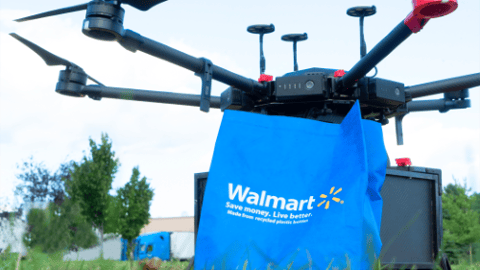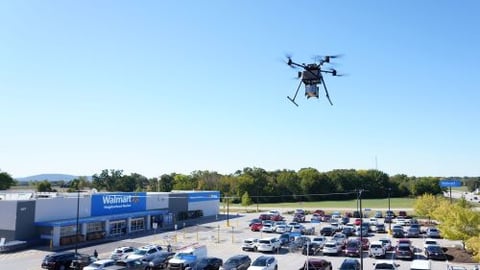Why Consumers Should Trust Drone Delivery
Your next meal or grocery order could very well descend from the skies.
In recent years, restaurants and retailers have started implementing consumer drone delivery around the world.
And indeed, drones have proved to be a viable delivery alternative. Their unique ability to provide a faster, cheaper and more sustainable method of delivery for those living in suburban and rural areas has brought a slew of new companies into the market, pushed established corporations to expand services, and prompted adoption by many forward-thinking retailers and restaurants.
Yet more than half of Americans remain skeptical of airborne delivery – 57% say they have little or no trust in drones to deliver products safely. Most cite personal and data privacy concerns as well as air traffic safety issues.
In truth, drone deliveries are indeed safe – certainly when compared to traditional road deliveries – but that reality doesn’t solve the issue of consumer opinion. As these hovering helpers continue to soar into the mainstream, the public perception of drone delivery is equally important to consider.
Safety First
Drone companies have already identified air safety and the safety of consumers on the ground as the No. 1 drone-related consumer concern. As such, they have been working closely with the Federal Aviation Administration (FAA) to ensure that drones are safely integrated into national airspace.
For example, several leading drone delivery companies are working closely with the FAA in its UAS Integration Pilot Program as well as the administration’s subsequent initiative, BEYOND, which, together with state departments of transportation, aims at integrating autonomous airborne vehicles safely into the airspace. The program also collects extensive community feedback to maximize the potential societal, economic and community benefits of drone usage and help ameliorate consumer skepticism.
Additionally, drones go through rigorous testing on a regular basis to ensure a safe integration into airspace. Drone technology takes numerous safety mechanisms into account, guided by a common methodology of “redundancy,” or backup systems. For example, Wing drones are equipped with many duplicate systems to ensure safety in any scenario, including two cruise motors, 12 hover motors and multiple batteries, as well as various navigation systems. Among several other redundant systems, DroneUp equips its drones with a parachute in case of failure. Our own Flytrex drones are similarly equipped with six power packs to prevent battery malfunction, and more motors than necessary to ensure that the drone can remain airborne should any single motor fail during delivery.
Automation also plays an important role in drones’ economic promise as well as their safety. That means that today’s delivery drones can automatically detect and respond to obstacles with no human intervention. Because the drone flight system is entirely automated, drone operators merely supervise flights as a means of reducing human error without removing human accountability.
And when it comes to the actual delivery, many delivery drones don’t even land or get close enough to the ground to potentially harm consumers. Rather, they lower packages using a tether directly into customers’ yards to ensure customer safety.
Personal Privacy
Americans also worry about their personal privacy – 88% of Americans don’t think drones should be able to record on their property, citing fears that camera-equipped delivery drones might do so without their consent. But it’s actually a common misconception that all drones are equipped with active cameras – in fact, most are not.
Some companies have equipped their drones with low-res cameras that send a live feed to their pilots to help with operational safety – nothing is recorded, and the cameras can’t zoom in or choose specific areas to focus on. Other companies don’t install cameras on their drones at all, instead using digital tracking devices to monitor drones during flight to make sure that they get to their destination safely and efficiently.
Bon Voyage and Bon Appetit
With its rapid progression from sci-fi fantasy to functional innovation, drone delivery has met the market at a time when supply chain woes, delivery costs and growing consumer expectations for almost-instant gratification continue to complicate traditional delivery systems. But as with any innovation, there’s still much work to be done to achieve full consumer acceptance, which will only come as awareness and understanding of these airborne vehicles grow.
Adoption of new technology isn’t only about the excitement of innovation. There’s an element of public image that must also be considered. To address the latter, drone delivery companies have been putting in the effort to demonstrate that safety, privacy and consumer satisfaction are the utmost priority for everyone, everywhere.






